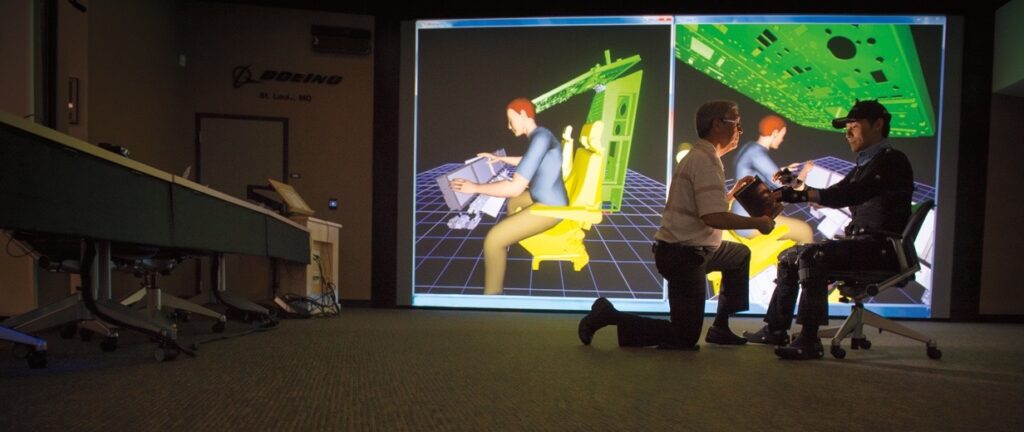ST. LOUIS: Boeing opened the doors of its Phantom Works’ Virtual Warfare Center to reporters for the first time during Defense Secretary Ash Carter’s visit, showing us tantalizing glimpses of advanced technologies such as its Talon HATE project to improve communications between the F-22 and efforts to double to 16 the air-to-air missile load of an F-15.
But a key focus of the visit — from Boeing’s point of view — was its Black Diamond facility. Carter received a half-hour tour of the facility; the press was not invited. Boeing representatives who spoke with the press would not discuss the facility. I understand it includes a variety of manufacturing technologies designed to greatly reduce costs on large and highly complex programs such as fighters, bombers and large advanced commercial airliners. Stu Voboril, Phantom Work’s director of strategy and program development, talked with reporters quite a bit while Carter was getting his tour about efforts to reduce productions costs but he did not discuss Black Diamond.
Aviation Week reports that the facility is not subject to government security regulations as Boeing paid to develop it. (Of course, that will only remain true for as long as the facility is not involved with classified programs.) The Aviation Week story also claims the technologies involved could be very useful for the production of stealth aircraft, such as the Long Range Strike Bomber (LRSB).
However, Carter denied publicly during his tour that he discussed any aspect of the LRSB program. If the Black Diamond’s technologies were touted as helpful to the possible production of LRSB by the Boeing folks, but Carter did not discuss it, that would have suited both sides. The secretary is a pretty avid technologist and the prospect of a system that could substantially reduce the costs of military production would be of great interest to him both personally and professionally.
Carter’s visit here was a two-pronged effort. On the one hand, Carter flew here to deliver the keynote to a DARPA conference intended to help kindle the flame of innovation among a group of technologists who don’t normally even think of working with the Defense Department.
But his visit to Boeing was a clear nod to the established defense companies that they do yeoman’s work and deserve recognition for their advanced technology work, even though senior Pentagon leaders continue to push the big companies to spend more on IRAD, as their self-funded research and development is known.
There’s been grumbling from defense executives about the IRAD issue, as Breaking D readers know, and about the strong push by the Pentagon to entice the Silicon valley types to work more closely with the military. The veteran defense types say they’ve contributed enormously to the supremacy of American arms and deserve recognition for it.
Carter recognized the second biggest defense company today with his visit, something sure to be noted by Boeing’s fellow primes.
The crowd of 1,200 at the DARPA conference — entitled “Wait? What? — made it very clear that Carter is gaining traction with his technology push. It may be that the audience wasn’t as “sophisticated” as those at regular defense conferences. Or it may be that the fact it was held in St. Louis and not Washington meant the crowd was more alive and less restrained. But I’ve never seen a defense secretary greeted by woo hoos and a cheering standing ovation.
Navy jet trainer fleet operations remain paused after engine mishap
One week after the incident, a Navy spokesperson says the service is continuing to assess the fleet’s ability to safely resume flight.



























